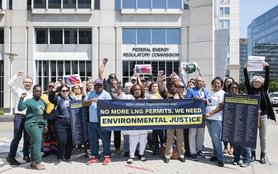Oxfam’s work in the U.S. focuses on the roots and structure of inequality, poverty, and racial injustice. We address specific, far-reaching challenges to historically excluded communities, especially women, sexual- and gender-diverse groups, people of color, immigrants, and refugees.
These priorities lead us to work in the U.S. South. Of the most impoverished states in the U.S., 10 are in the Southeast and have the most hourly paid employees working at or below the federal minimum wage. Seven out of the 10 states with the highest levels of food insecurity are in the South, and Southern states consistently rank at the bottom for labor policies for working families.
Oxfam works with organizations that are led by and represent people of color that are advocating for better wages for workers, equal pay for women and more federal support for states, and pushing for better services for the most vulnerable people. We work closely with organizations in Georgia, Mississippi, North Carolina, and Louisiana that are promoting the leadership of Black women, domestic workers, and worker rights groups, and support state-level advocacy on climate policies that impact working families, including grassroots engagement on a just energy transition.






What challenges are people in the United States facing?
$7.25/hour
Federal minimum wage, far below what a worker needs to make a decent living.
$57 billion
Income lost to U.S. workers in 2019 due to lack of child care.
50%
Of working women of color earn less than $15 an hour, compared to 26% of white workers.